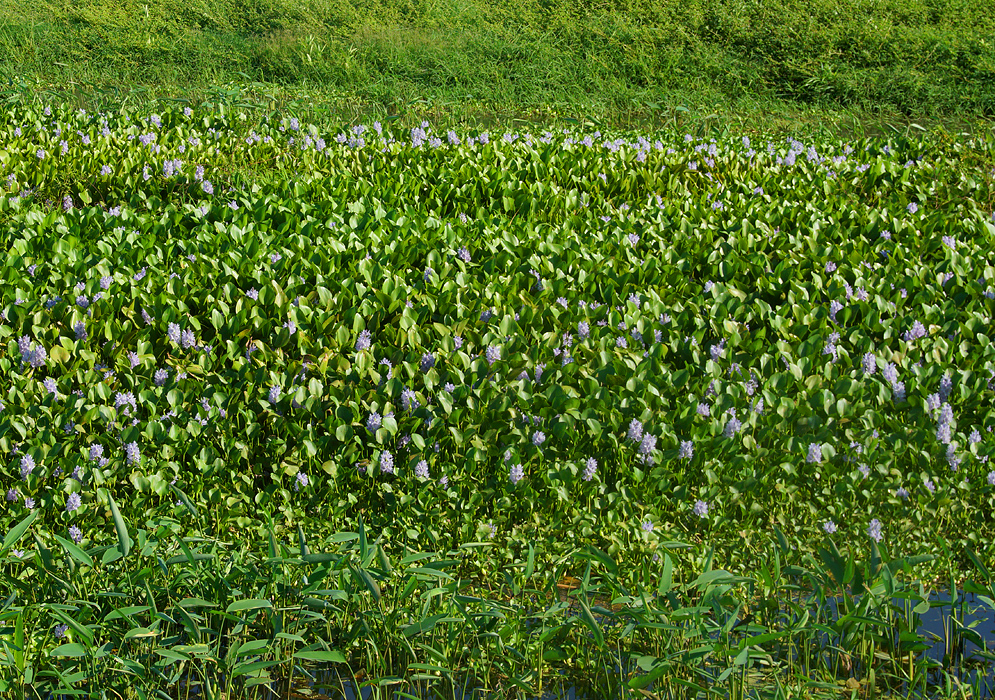This post has 11 Simple Fields-fields attached. Show fields.

Originating from Brazil, the Water Hyacinth is a prolific aquatic herb that has become a global concern due to its invasive nature. It thrives in tropical and sub-tropical regions worldwide, often inhabiting stationary or slow-moving warm waters. The plant's ability to rapidly proliferate makes it a menace in many regions outside its native habitat, as it can obstruct waterways and impede the movement of fishing boats. Its fast growth and formation of dense floating mats these floating islands, also known as tussocks or flotants, can weigh up to 200 tons per acre. It has medicinal properties, with studies indicating its extracts possessing anticancer, antioxidant, anti-inflammatory, antimicrobial, and other pharmacological activities. The plant is also known to treat various ailments like nausea, upset stomach, and diarrhea, parts of the plant are edible and are sometimes cooked and eaten in places like Java and Formosa. Water Hyacinth also holds promise in environmental remediation and commercial applications. It can adsorb pollutants including synthetic dyes and heavy metals, which is a trait that could be harnessed for wastewater treatment or heavy metal remediation. Photographed in the department of Bolivar, Colombia.

